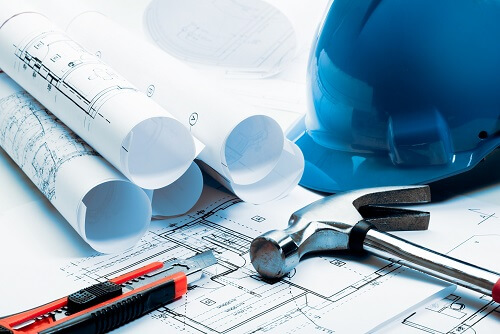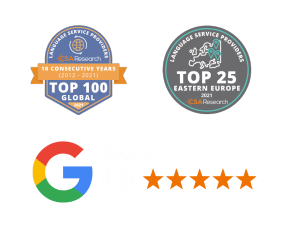Technical translation refers to the process of translating documents, manuals, and materials that involve technical matters. It makes the sharing of technical knowledge and information across different languages possible. It also helps to facilitate international trade, collaboration in science and technology, and the global dissemination of innovations.
If you are looking for a professional technical translation, our skilled team is here to help. Read on to discover why we are the best choice for this task.
Technical Translations: Industries and Sectors
Technical writers cover various topics in their respective fields of expertise. At Skrivanek, we translate extensively from a wide range of areas, including technical texts:
Manufacturing: translating user manuals, safety instructions, and product specifications. These documents attest that machinery and products can be used safely around the world.
Information Technology: technical translation here covers software localisation, user interface texts, and technical guides. It makes online products accessible to a global audience.
Engineering: this involves converting technical drawings, specifications, and project plans into other languages, and is appropriate for both international collaborations and construction projects.
Automotive Industry: here there is a strong reliance on user manuals, specifications, and marketing materials for vehicles. We can help global manufacturers reach a wider market.
Medical and Pharmaceutical: this involves making medical equipment manuals, clinical trial documents, and pharmaceutical research understandable. This ensures that medical advancements and drugs can be effectively used worldwide.
Energy Sector: this concerns safety guidelines, technical specifications, and environmental impact assessments for global energy projects and research.
Legal and Regulatory: this typically involves patents, compliance documents, and contracts. It is important here that legal terms and conditions are accurately conveyed in different languages.
WOULD YOU LIKE A NON-BINDING OFFER? WE ARE WAITING FOR YOUR REQUEST!
WOULD YOU LIKE A NON-BINDING OFFER? WE ARE WAITING FOR YOUR REQUEST!
Why Are Technical Translations Necessary?
With the rise in global commerce, and the need to market our products and services internationally, technical translation becomes indispensable. This involves the localisation of user manuals, product descriptions, safety instructions, and warranties, a process that requires adapting content to meet the preferences of each target market. The goal here is to ensure that products become comprehensible and user-friendly for other language users.
Global manufacturing projects often involve collaboration between different countries. The accurate translation of blueprints, technical specifications, and reports ensures that all stakeholders have a precise understanding of all the details.
Strict regulatory standards bind many industries. The technical translation of safety manuals, compliance reports, and legal disclaimers should comply with the relevant legal standards of each country. Misinterpretations or errors in these documents can lead to legal complications.
In academic research, technical translation facilitates the sharing of scientific or technical knowledge. Translating research papers, studies, and scientific findings helps to advance the global scientific community, a process making groundbreaking research accessible to a wider audience.
What Kind of Content Undergoes Technical Translation?
The translation of technical documents involves various types of content, and we have extensive experience working with:
- User manuals, instructions, and installation guides
- Safety data sheets
- Video tutorials
- Scientific documents
- Mechanical engineering documentation
- Quality control documents
- Descriptions of user interfaces
- Technical documentation and manuals
- Catalogues
- Patent translations
- Presentations
- other technical documents.



Why Does Technical Translation Require a Translation Agency?
Technical translation demands a high level of expertise and attention to detail. Navigating industry-specific jargon also requires a certain amount of expertise. Each industry, whether it is engineering, IT, or biotechnology, has its own set of terminologies and acronyms. A translator must be well-versed in the topic and the relevant industries in order to avoid oversights. This requires continuous learning as well as following industry-specific news.
As industries progress, new terms and concepts emerge. A technical translator needs to keep pace with these changes to ensure that their translations remain relevant. Using outdated vocabulary might question the expert status of a company or an individual.
The goal is to produce a translation that is faithful to the original document’s purpose and tone. This is particularly challenging when translating scientific papers or manuals. A small error can have significant consequences, such as operational failures or even safety hazards.
Technical translators must understand the context in which the technical content is used to ensure the translation is accurate. They need to know a lot about the subject that they are writing about.
Technical Terminology
Technical terminology is vital in the field of technical translation. For instance, in engineering, ‘torsional strength’ or ‘shear modulus’ have precise meanings that are core to understanding rotational mechanics. Misinterpreting them can lead to significant misunderstandings in engineering projects.
Similarly, in IT, ‘machine learning’, ‘neural networks’, and ‘API’ have specific connotations. Without a solid grasp of these concepts then it would be difficult to convey the correct meaning in another language. An incorrect choice could potentially lead to errors in software localisation.
As industries evolve, so does their technical language. In the automotive industry, the shift towards electric and autonomous vehicles has introduced a whole new set of terminologies. Some examples of this relatively new vocabulary are ‘regenerative braking’ and ‘LIDAR technology’.
Technical Translation Process
This process needs a structured and multi-step approach to ensure accuracy and relevance in the final translated document. As part of the initial preparation, the translators evaluate the whole document to understand its content, purpose, and any specific requirements of the target audience. This includes identifying key technical terms and understanding the document’s structure and context.
Special attention has to be paid to diagrams, graphs, and other visual elements. They often require separate handling to maintain their original clarity in the translated version. This is one of the tasks undertaken by our DTP (desktop publishing) department.
The second step is the actual translation. Our experts, based on their relevant backgrounds and extensive experience in the field, convert the content into the second language. As part of this process, they ensure that all the industry-specific terms and concepts are accurately translated.
Sometimes, this step requires collaborative efforts between linguists and technical experts in order to ensure linguistic and technical accuracy.
After the translation process, it is time for revision and quality assurance. The document undergoes several rounds of reviews and edits, either conducted by native speakers or the most experienced translators in the team. They proofread to eliminate misspellings or other errors, check for consistency in the terminology, and ensure that the layout of the translated document aligns with the original.
The goal is to deliver a final product that reads well in the target language and reflects the technical content of the original document.
Technologies Used in Technical Translation
Over the past few decades translation has been revolutionised by tools that enhance accuracy. The use of CAT (computer-assisted translation) tools accelerates the entire process. A translation memory stores previously translated segments, phrases, or sentences, which can be later reused in future translations. This maintains consistency across multiple documents.
Terminology management tools ensure the accurate use of all the technical terms. These databases allow translators to retrieve specialised vocabulary with reference notes specific to an industry, helping to facilitate the correct choice.
Technical translation presents complexities that surpass the capabilities of machine translation. The understanding of industry-specific jargon requires a level of expertise that machines cannot replicate. The highly specialised content makes human expertise an indispensable component. The qualified technical translator is able to verify whether the chosen words will be a good fit and can check various sources and glossaries when in doubt.
What Services Do We Offer at Skrivanek?
We are dedicated to providing complex, high-quality solutions that help you in your everyday business:
Written and oral translations: Our team of skilled translators has practical experience in their respective fields.
Localisation services: We can adapt your documents, so that they sound natural to the foreign audience.
Transcription: Our specialists can convert technical videos or audio recordings into translated text for easier understanding.
Certified translation: We can translate the documentation required by various government bodies and institutions.
Desktop Publishing (DTP): The goal of our solutions here is to maintain the original layout and format of your source document.
Why Choose Skrivanek for Technical Translations?
Our team at Skrivanek possesses professional translation skills, while our procedures have been honed over 30 years to make us a reliable language service provider in technical texts. We have become a trusted name in the European market and can cater for various industries, including automotive, medical, pharmaceutical, and manufacturing. This means we are familiar with your specific industry needs.
We benefit from the integration of advanced translation technologies. The use of the latest software ensures each technical translation is 100% accurate and delivered within the deadline. While we offer express services, please note that technical translations often require more time due to their complexity.
We work with over 100 language pairs, thanks to our large team of skilled technical translators and proofreaders. We can also work with various file formats, which makes our work very versatile, including PDF, DOCX, XLSX, PPTX, SRT, SUB, HTML, and XML.
Choose Skrivanek for all your translation needs, liberating your schedule by avoiding the search for a new translation agency for each project.
WHAT OUR CUSTOMERS SAY ABOUT US
Vielen Dank für Ihre qualifizierten Übersetzungen und die hervorragende Kundenbetreuung.
Herzlichen Dank für die sehr gute und nette Zusammenarbeit!
Ich empfinde die Zusammenarbeit mit Skrivanek als höchst angenehm. Skrivanek reagiert immer vorbildlich!
Rasch, zuverlässig, kunden- und lösungsorientiert, sehr engagiert. Wir schätzen die Zusammenarbeit mit Skrivanek sehr.
Vielen Dank für die perfekte Unterstützung & tolle Zusammenarbeit in den vergangenen Jahren! Wir freuen uns auf die kommenden Jahre… weiter so!
Super schnelle Bearbeitung und immer bestens informiert!
Alles Bestens, entsprechend erhalten Sie von uns auch viele Aufträge!
Sehr schnelle Reaktionszeit, klare Fristen und deren Einhaltung.
NEARLY 30 YEARS OF EXPERIENCE!
We provide professional translations that meet the highest quality standards.
100+
language combinations in portfolio
100%
of our clients would recommend us
50+
fields of expertise





